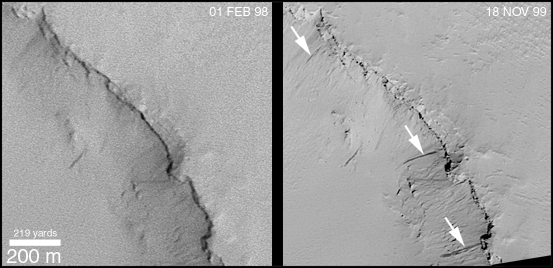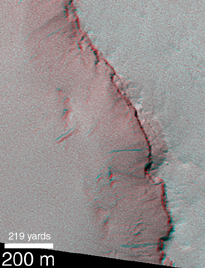Changes between 1 February 1998 and 18 November 1999--PIA02379
 | 3-D Anaglyph View
 |
The picture on the left shows a comparison of the southeastern crater wall as it appeared on February 1, 1998, and again on November 18, 1999. (Note that the picture has been rotated relative to the context image at lower left). During the time between the two images, three new dark slope streaks formed (arrows, top right). The older streaks are lighter and fainter than these new, dark ones, suggesting that streaks fade with time. This means that, at least for the crater walls shown here, any streak that is dark is younger than any streak that is pale. The stereo anaglyph (requires red-blue "3-D glasses") at the lower right uses the two images of the crater rim to provide a 3-dimensional view. The anaglyph is helpful to see that the dark streaks really do occur on a slope. In addition, by viewing the anaglyph without 3-d glasses, one can easily identify the three new streaks because they appear as blue and have no red counterpart.
These three new slope streaks formed sometime between February 1998 and November 1999. Similar streaks were observed in the highest-resolution images from the Viking orbiters in the late 1970s, but for more than 20 years no one has known how recent these features might be, or how often they might form. Now, MOC is providing some exciting answers.

